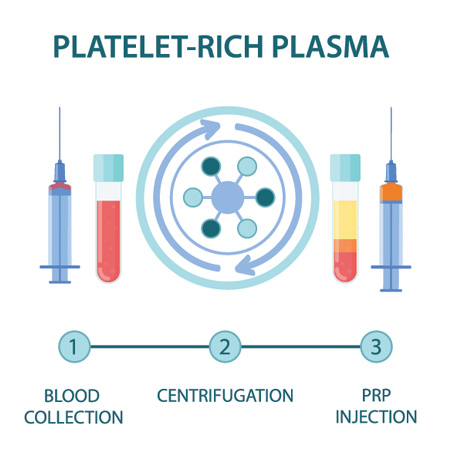Medial Epicondylitis (Golfer’s Elbow)
What is medial epicondylitis?
Medial epicondylitis (golfer’s elbow) is a painful condition of the elbow due to inflammation of the forearm muscles and tendons that attach to the medial epicondyle (bony prominence on the inside part of the elbow). This can progress to a more chronic condition with microscopic tearing and degeneration of the muscles and tendons, resulting in a tendinosis. It occurs much less frequently than lateral epicondylitis (tennis elbow).
What causes medial epicondylitis?
Medial epicondylitis usually develops in the setting of repetitive overuse injuries such as those seen in sporting or occupational settings. Golf, rowing, and throwing athletes (baseball pitchers, javelin, tennis serving) are more commonly affected from a sports standpoint whereas bricklaying, hammering, and typing are common occupational causes of medial epicondylitis.
How is medial epicondylitis diagnosed?
Patients with medial epicondylitis typically present with gradual onset of volar and medial (front and inner) elbow and forearm pain. Physical examination may demonstrate tenderness at and just distal to the medial epicondyle and common flexor/pronator mass of the forearm. Resisted wrist and finger flexion as well as forearm pronation may reproduce the pain. X-ray, ultrasound, or magnetic resonance imaging (MRI) may aid in confirmation of diagnosis.
How is medial epicondylitis treated?
Initial treatment options for management of medial epicondylitis may include medications, bracing, and physical therapy. Physical therapy should primarily focus on improvements in range of motion/mobility at the elbow as well as the adjacent shoulders and wrist joints as well as forearm musculature and tendon strengthening. If a patient is still experiencing significant pain and dysfunction despite the aforementioned treatment options, interventional options may include corticosteroid or platelet rich plasma (PRP) injections.
Corticosteroid Injection
Using ultrasound guidance, a needle is carefully and precisely guided to the painful region. A steroid solution is then instilled through the needle to coat or bathe the painful region with anti-inflammatory medication. This helps to decrease inflammation and, subsequently, decreases pain and improves function.
Platelet Rich Plasma (PRP)
PRP is component of the patient’s own blood. It is rich in growth factors and other cells that signal an increased healing response to a damaged tissue. It is used to treat a variety of painful spine and musculoskeletal conditions.
Blood is drawn from a patient and then placed in a centrifuge for it to be “spun down.” This causes the different components of the blood to separate out in the vial. The PRP solution is then drawn up into a syringe and prepared to be injected at the site of the patient’s injury.

Discontinue use of all non-steroidal anti-inflammatory drugs (NSAIDs) at least 7 days prior to the procedure. These ay include ibuprofen (Advil, Motrin), naproxen (Aleve), meloxicam (Mobic), diclofenac (Voltaren), indomethacin (Indocin), and celecoxib (Celebrex). If you are taking oral corticosteroids such as prednisone or a Medrol Dosepak, please discuss this with Dr. Best prior to your procedure. In many cases, Dr. Best may request that the corticosteroid medication be discontinued in preparation for the PRP injection. Do NOT stop aspirin unless specifically instructed by Dr. Best. Depending which body part is injected, you may need a driver to and from your procedure. If you have any questions or concerns about whether to continue or discontinue any of your medications leading up to your PRP injection, please discuss these issues with Dr. Best and his team.
Once the PRP solution is created, the patient is positioned for the procedure. The skin is thoroughly cleaned and the target for the injection obtained with ultrasound or fluoroscopy (x-ray). Then, a numbing solution is injected at the skin and subcutaneous tissues for increased procedural comfort. Finally, under ultrasound or fluoroscopic (x-ray) guidance, the needle is guided to the injury site and the PRP solution is deposited.
It is common to experience mild to moderate pain or discomfort during the initial 0-3 days after the PRP procedure. Post-procedure pain can be easily managed with acetaminophen (Tylenol) or other non-NSAID pain medication. Try to avoid applying ice or heat to the injection site.
During the 3–14-day period after the PRP injection, you may gradually increase physical activity. Please continue to avoid use of NSAIDs; however, ice may be applied for short periods of time throughout the day to aid in management of post-procedure soreness/discomfort if present.
During the 2–4-week period after the PRP, Dr. Best may recommend initiation of a course of physical therapy to aid in recovery and optimization of healing. The patient may begin to note improvement in pain during this time period, though it often takes 1 month or more for the benefits of PRP to take hold.
At this time, PRP injections are not typically covered by any insurance companies. Pricing and payment options can be discussed with Dr. Best and his team prior to your procedure.
As an alternative to PRP injections, medial elbow injections with corticosteroid can be performed to help alleviate medial elbow region pain. Using ultrasound guidance, a needle is carefully and precisely guided to the painful region. A steroid solution is then instilled through the needle to coat or bathe the painful region with anti-inflammatory medication. This helps to decrease inflammation and, subsequently, decreases pain and improves function.
At a Glance
Dr. Craig Best
- Harvard Fellowship-Trained Interventional Spine & Sports Medicine Specialist
- Double Board-Certified in Physical Medicnie & Rehabilitation and Pain Medicine
- Assistant Professor of Physical Medicine & Rehabilitation and Orthopedic Surgery
- Learn more

